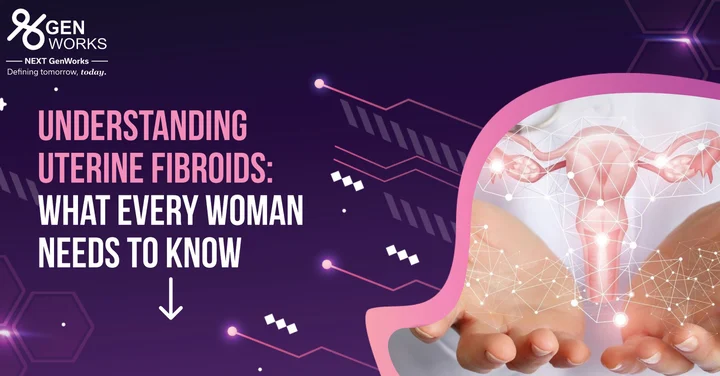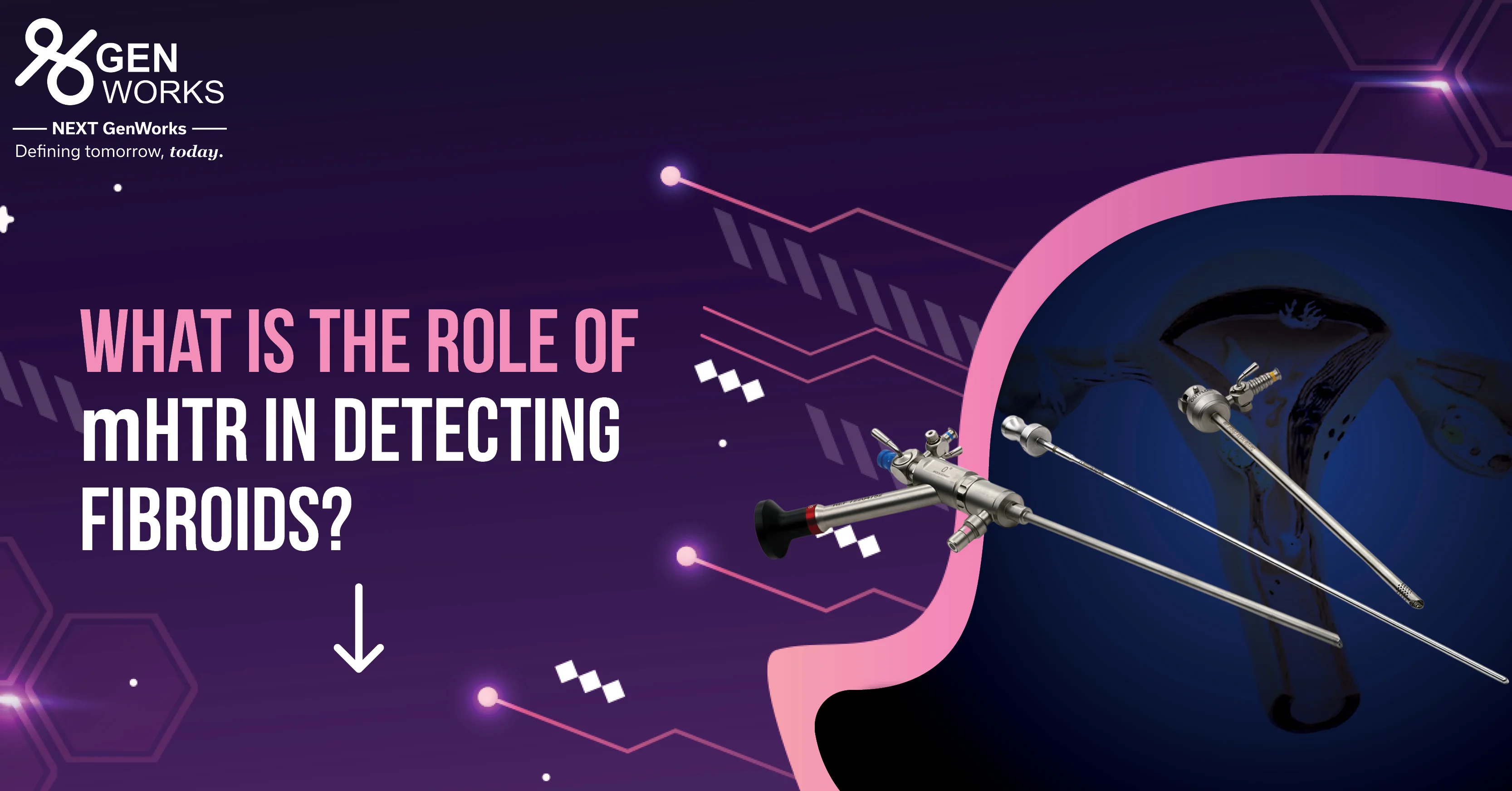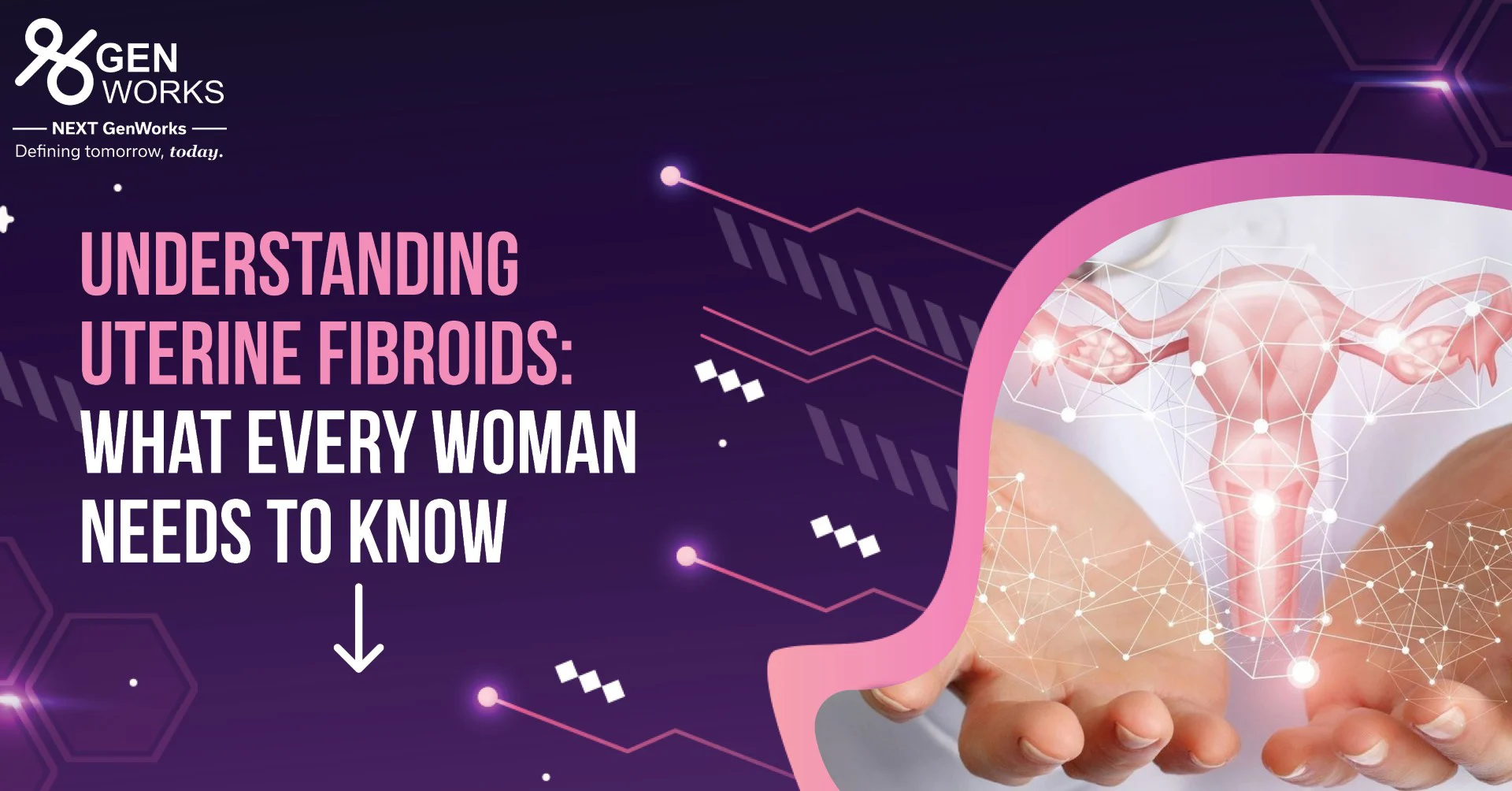Understanding Uterine Fibroids: What Every Woman Needs to Know

Uterine fibroids are a common health concern among women, affecting up to 80% of women by the age of 50. Women who have the symptoms of Uterine Fibroids find it hard to live with them. Some have pain and many also have heavy menstrual bleeding.
What’s more, uterine fibroids also put pressure on the bladder causing frequent urination or the rectum causing rectal pressure. If the fibroids get very large, they can also make the woman look pregnant.
Despite their prevalence, many women are unaware of what fibroids are, their symptoms, and available treatment options. In this blog, we will talk about what uterine Fibroids are and how can women better understand and manage this condition.
What Are Uterine Fibroids?
Uterine Fibroids, also known as leiomyomas or myomas, are non-cancerous growths that develop in or on the uterus. They can vary significantly in size, from tiny seedlings that are undetectable by the human eye to large masses that can distort and enlarge the uterus.
According to FOGSI, the prevalence of fibroids is reported to be 37.65% in rural populations and 24% in urban populations. Fibroids can occur as a single growth or multiple growths and can develop in different parts of the uterus, including the ones mentioned below.
-
Intramural Fibroids: These are the most common type, growing within the muscular wall of the uterus.
-
Subserosal Fibroids: These grow on the outer surface of the uterus and can expand outward, giving the uterus a lopsided appearance.
-
Submucosal Fibroids: These develop just under the lining of the uterine cavity and can protrude into the uterine cavity itself.
-
Pedunculated Fibroids: These grow on a small stalk either inside or outside the uterus.
Symptoms of Uterine Fibroids:
The symptoms of uterine fibroids can vary widely depending on their size, number, and location. Some women with fibroids experience no symptoms at all, while others may suffer from severe discomfort. The common symptoms include the ones mentioned below.
-
Heavy Menstrual Bleeding: This is the most frequent symptom. Women may experience prolonged periods or bleeding between periods.
-
Pelvic Pain and Pressure: Larger fibroids can cause a feeling of heaviness or pressure in the pelvic area.
-
Frequent Urination: As fibroids grow, they can press on the bladder, causing frequent urination or difficulty emptying the bladder.
-
Constipation: Fibroids that press on the rectum can lead to constipation.
-
Back and Leg Pain: Fibroids can cause pain in the lower back or radiate pain down the legs.
-
Reproductive Problems: In some cases, fibroids can lead to infertility, pregnancy complications, or recurrent miscarriages.
Causes of Fibroids:
Although the exact cause of uterine fibroids is unknown, a woman's risk of getting them might be raised by a number of variables. We'll talk about them below.
-
Hormones: The growth of fibroids appears to be aided by the hormones progesterone and estrogen, which both encourage the uterine lining's development throughout each menstrual cycle.
-
Genetics: A woman's risk is increased if her family has a history of fibroids. You have a higher chance of developing fibroids if your mother or sister did.
-
Age: Women are more likely to get fibroids as they become older, especially in their 30s and 40s through menopause.
-
Obesity: Carrying excess weight raises the possibility of fibroids.
-
Diet and Lifestyle: The risk of fibroid disease can be raised by eating a diet heavy in red meat and lacking in fruit, vegetables, and dairy. Beer drinking in particular has also increased.
Diagnosis of Uterine Fibroids:
The uterine fibroids are often found during a routine pelvic exam. If fibroids are suspected, several tests can confirm the diagnosis:
-
Ultrasound: This imaging test uses sound waves to create a picture of the uterus and can show the presence, size, and location of fibroids.
-
Magnetic Resonance Imaging (MRI): MRI provides more detailed images and is particularly useful in mapping fibroids for surgical planning.
-
Hysterosonography: This procedure involves injecting saline into the uterine cavity to expand it and make it easier to obtain ultrasound images.
-
Hysteroscopy: A small device called a hysteroscope is inserted through the cervix into the uterus, allowing the doctor to see fibroids inside the uterine cavity.
Summing It Up:
Understanding uterine fibroids is crucial for women’s health. By recognising symptoms, knowing the risk factors, and exploring treatment options, women can take proactive steps in managing this condition. If you suspect you have fibroids, get screened at the earliest and consult with your healthcare provider to discuss the best course of action tailored to your individual needs.




